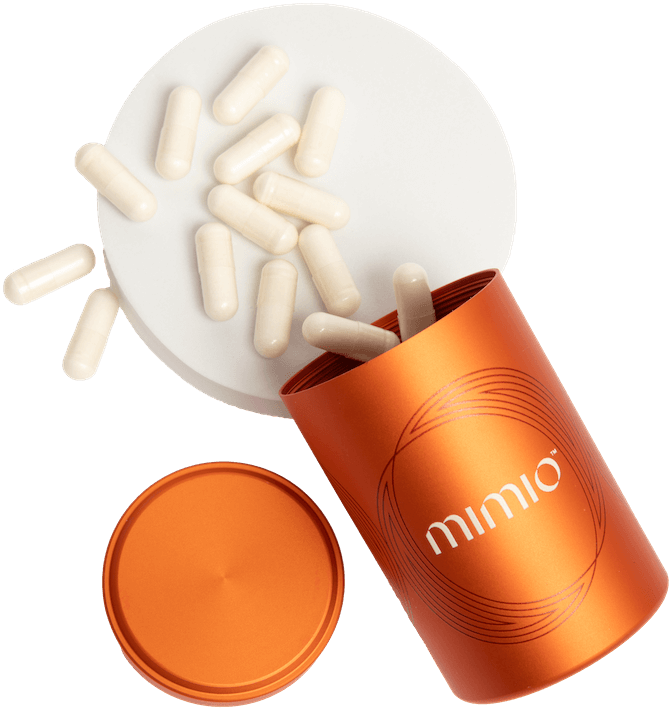How Does GLP1 Work? Understanding Its Role in Your Health
When it comes to health and metabolism, a small but mighty hormone known as GLP1 (Glucagon-like Peptide 1) plays an outsized role. From regulating blood sugar to influencing weight management and even gut health, GLP1 has captured the attention of researchers, doctors, and biohackers alike. But how does GLP1 actually work, and why is it such a hot topic in modern health discussions?
In this article, we’ll explore the science behind GLP1, its critical functions, and how it can influence your overall well-being.
What is GLP1?
GLP1, or glucagon-like peptide 1, is an incretin hormone produced by cells in the lining of your small intestine. It is released in response to food intake and plays a key role in managing glucose and energy.
Where is GLP1 Produced?
-
Intestinal L-cells: These specialized cells in the small intestine secrete GLP1 shortly after you eat.
-
Nervous System: Certain neurons in the brain also produce GLP1, linking it to appetite regulation and mood.
The Primary Functions of GLP1
GLP1’s effects are widespread, influencing multiple systems in the body. Here’s how it works:
1. Blood Sugar Regulation
-
Stimulates Insulin Secretion: GLP1 prompts the pancreas to release insulin when glucose levels are high. This helps lower blood sugar effectively.
-
Suppresses Glucagon: It inhibits the secretion of glucagon, a hormone that raises blood sugar by triggering the liver to release stored glucose.
-
Promotes Glucose Uptake: GLP1 enhances the ability of cells to absorb glucose from the bloodstream.
2. Slows Gastric Emptying
-
By slowing the rate at which food leaves the stomach and enters the small intestine, GLP1 prevents rapid spikes in blood sugar. This effect also contributes to longer-lasting feelings of fullness.
3. Appetite Regulation
-
GLP1 interacts with the brain’s hunger centers to signal satiety, helping to control how much you eat.
4. Cardiovascular Health
-
GLP1 has been shown to improve heart function and may reduce the risk of cardiovascular diseases by lowering blood pressure and improving lipid profiles.
5. Neuroprotection
-
Emerging research suggests GLP1 may have protective effects on the brain, potentially lowering the risk of neurodegenerative diseases like Alzheimer’s.
How Does GLP1 Work Mechanistically?
The GLP1 Receptor (GLP1R)
GLP1 exerts its effects by binding to GLP1 receptors (GLP1R), which are found in various tissues, including:
-
The pancreas
-
The brain
-
The stomach
-
The heart
-
Fat and muscle cells
When GLP1 binds to these receptors, it triggers signaling pathways that bring about its beneficial effects, such as enhanced insulin secretion or appetite suppression.
GLP1 and the Pancreas
In the pancreas, GLP1 acts on beta cells to:
-
Boost insulin production
-
Increase the survival and growth of beta cells, which are often compromised in conditions like Type 2 diabetes
GLP1 in the Brain
GLP1 influences the hypothalamus, the part of the brain responsible for hunger regulation, to decrease appetite and increase feelings of fullness.
The Role of GLP1 in Health and Disease
1. Diabetes
-
In people with Type 2 diabetes, GLP1-based medications are used to improve blood sugar control by enhancing insulin secretion and slowing gastric emptying.
-
These medications also help preserve pancreatic beta-cell function, which is critical in preventing disease progression.
2. Obesity
-
GLP1 is a game-changer in weight management. By promoting satiety and reducing hunger, it can significantly help with caloric intake reduction.
-
GLP1 receptor agonists, like semaglutide, have been shown to lead to substantial weight loss in clinical trials.
3. Cardiovascular Disease
-
Studies have linked GLP1 to improved cardiovascular outcomes, including reduced risk of heart attack and stroke. This is likely due to its role in improving lipid profiles and reducing inflammation.
4. Neurodegenerative Diseases
-
Research indicates that GLP1 may help protect neurons, reduce oxidative stress, and improve cognitive function. It’s being studied as a potential treatment for Alzheimer’s and Parkinson’s diseases.
GLP1-Based Therapies
The therapeutic potential of GLP1 has led to the development of medications and supplements designed to harness its benefits.
1. GLP1 Receptor Agonists
-
Synthetic drugs that mimic GLP1 by activating its receptor.
-
Common examples: Liraglutide (Saxenda), Semaglutide (Ozempic), Dulaglutide (Trulicity).
-
Benefits: Improved blood sugar control, weight loss, and cardiovascular protection.
2. Fasting Mimetic Supplements
-
Supplements like Mimio Biomimetic Cell Care are designed to mimic the metabolic benefits of fasting, which naturally boosts GLP1 levels.
-
Benefits: Enhanced glucose metabolism, reduced inflammation, and support for overall metabolic health.
3. Lifestyle Interventions
-
Certain foods, like protein-rich meals and fermented foods, can naturally stimulate GLP1 release.
-
Intermittent fasting has also been shown to boost GLP1 levels.
Natural Ways to Enhance GLP1 Function
Boosting GLP1 levels doesn’t always require medication. Here are some evidence-based strategies:
1. Dietary Choices
-
Include high-fiber foods like legumes, vegetables, and whole grains.
-
Add healthy fats from avocados, nuts, and olive oil.
-
Prioritize protein-rich foods, which stimulate GLP1 release.
2. Intermittent Fasting
-
Fasting promotes the release of GLP1, helping regulate blood sugar and appetite.
3. Exercise
-
Regular physical activity can enhance GLP1 secretion and improve its effectiveness.
4. Stress Management
-
Chronic stress can disrupt GLP1 signaling. Practices like yoga and mindfulness can support healthy hormone levels.
Challenges and Limitations
While GLP1 offers impressive benefits, it’s not without challenges:
-
Short Half-Life: Natural GLP1 breaks down quickly, requiring synthetic agonists for prolonged effects.
-
Side Effects: GLP1 receptor agonists may cause nausea, vomiting, or gastrointestinal discomfort in some individuals.
-
Access: GLP1-based therapies can be expensive and are not always accessible to all patients.
The Future of GLP1 Research
The potential of GLP1 extends beyond current applications. Researchers are exploring:
-
Extended-Release Formulations: To improve convenience and adherence.
-
Neuroprotective Uses: For conditions like Alzheimer’s and Parkinson’s.
-
Precision Medicine: Tailoring GLP1-based therapies to individual genetic and metabolic profiles.
Unlocking the Power of GLP1
GLP1 is more than just a blood sugar regulator—it’s a metabolic powerhouse with far-reaching benefits for weight management, cardiovascular health, and even brain function. Whether through natural approaches like diet and exercise or cutting-edge solutions like GLP1 receptor agonists and fasting mimetic supplements like Mimio Biomimetic Cell Care, optimizing your GLP1 function can unlock new levels of health and vitality.
As science continues to reveal the intricacies of GLP1, one thing is clear: understanding and harnessing its potential is key to living a longer, healthier life.



